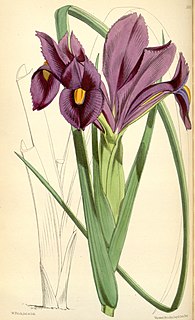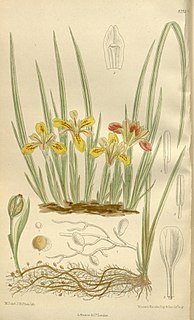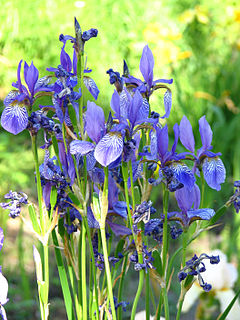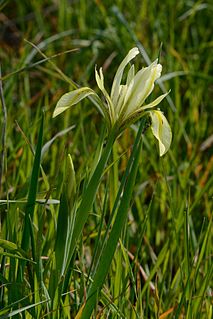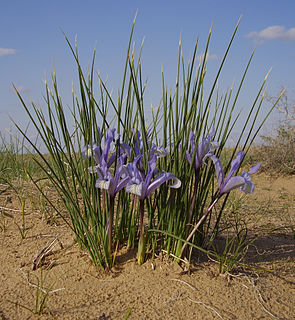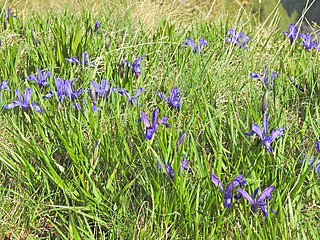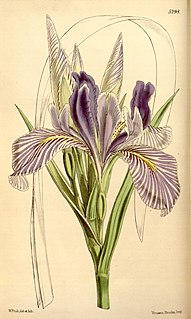| Long-petaled irises | |
|---|---|
 | |
| Iris missouriensis | |
| Scientific classification | |
| Kingdom: | Plantae |
| Clade: | Tracheophytes |
| Clade: | Angiosperms |
| Clade: | Monocots |
| Order: | Asparagales |
| Family: | Iridaceae |
| Genus: | Iris |
| Subgenus: | Iris subg. Limniris |
| Section: | Iris sect. Limniris |
| Series: | Iris ser. Longipetalae |
| Species | |
Iris ser. Longipetalae is a series of the genus Iris , in Iris subg. Limniris.
William Rickatson Dykes in his book 'Handbook of Garden Irises' (of 1924) includes 4 species in his Iris longipetala subsection; including Iris longipetala (Herbert), Iris missouriensis Nuttall, Iris arizonica (Dykes, 1917) and Iris montana (Nuttall). [1] Iris arizonica and Iris montana have since been classified as synonyms of Iris missouriensis. [2]
The series was then first classified as a 'series' by Diels in 'Die Natürlichen Pflanzenfamilien' (Edited by H. G. A. Engler and K. Prantl) in 1930. It was further expanded by Lawrence in Gentes Herb (written in Dutch) in 1953. [3] [4]
There is still a lot of confusion within the series.
The British Iris Society only lists Iris missouriensis and classes Iris longipetala as a variant of Iris missouriensis. [5] The American Iris Society and Pacific Iris Society lists three species; Iris longipetala (Herbert), Iris missouriensis (Nuttall) and Iris pariensis (Welsh). [6] [7] [8] But Plant List regards Iris pariensis as a synonym of Iris missouriensis. [2] Iris pariensis was found by Stanley Larson Welsh in Utah and published in 'Great Basin Naturalist' 46(2): 256 in 1986. [9]
The series has species are native to western North America, [6] seen in Washington (state), Oregon and California. [10]
They prefer to have moisture in the spring and a dry period during the summer. They also do not like root disturbance hence they are difficult to grow as nursery plants. They are also rarely grown in the UK. [10] The species have thick rhizomes, [8] fruiting stems (that follow the flowers) that stay on the plant until the next growing season, (or longer) [6] [8] a stigma with 2 teeth (or lobes) [8] and seed capsules with 6 ribs and taper into points on the ends. [6] [8]
- Iris longipetala Herbert
- Iris missouriensis Nuttall



